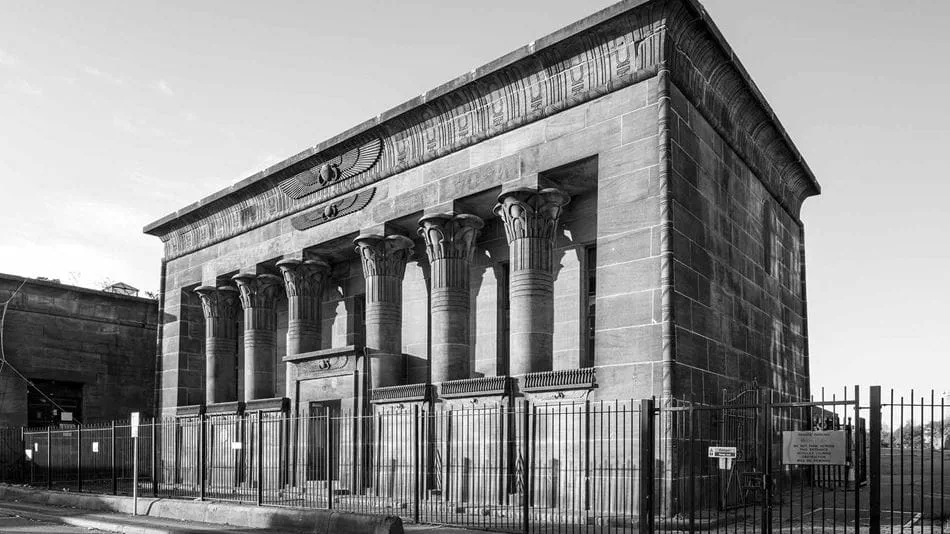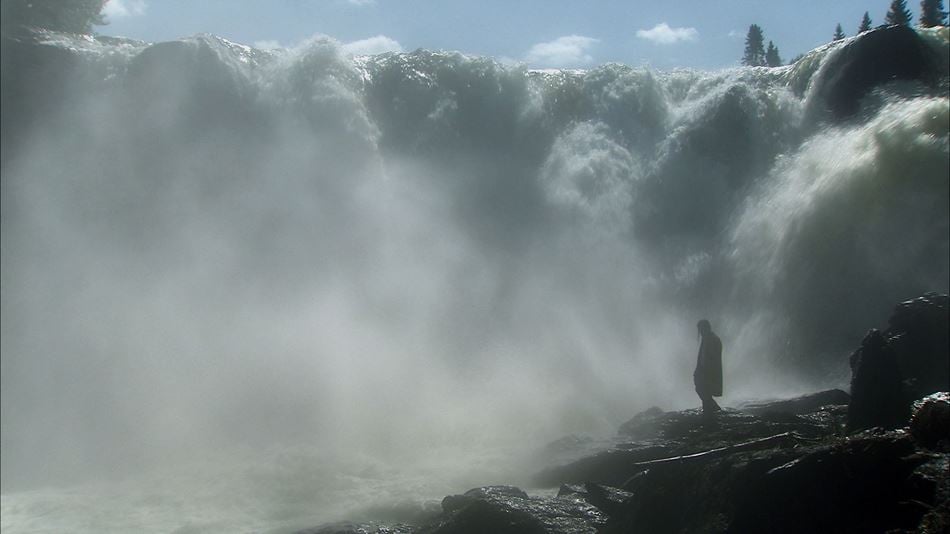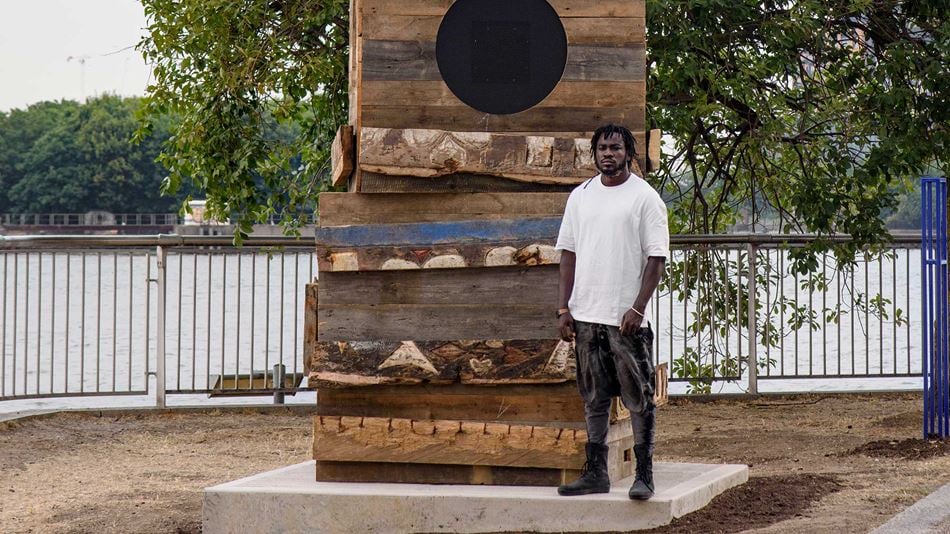Phase 2
Phase 2 is Arup’s cultural programme of exhibitions and events that explores the intersection between art, design and engineering. Founded in 2008, the programme supports new collaborations across these disciplines and as well as showcasing stories from Arup’s rich cultural history.
For more information, please contact [email protected] or follow phase2exhibitions on Instagram for the latest updates.
Simon Phipps: West Yorkshire Photographs 2023
We are delighted to announce the opening of ‘West Yorkshire Photographs 2023’ , a new exhibition of works by Leeds-born artist Simon Phipps exploring some of the most interesting architectural landmarks of West Yorkshire. The project was commissioned for Arup’s new office in Leeds. Phipps is well known for capturing British modernist and brutalist architecture on camera. Here, he turns his attention to buildings ranging from the Egyptian revival splendour of the former 19th century flax mill Temple Works to the austere minimalism of Emley Moor Tower, a design developed by Arup’s Jack Zunz in 1971 who, at the same time was leading the completion of the Sydney Opera House. As Phipps wrote: ‘Most of the photographs included in the project fall outside of my usual scope but nonetheless they display the integrity and vision that I find most compelling in architecture’.
The exhibition is on display at Arup, 11-12 Wellington Place, Leeds LS1 4AJ. Viewing by appointment, please contact [email protected] or please contact [email protected] if you would like to receive a copy of the exhibition booklet.

Tributaries, an exploration of water through artists’ film, The House Mill, London
Tributaries is an exciting new film exhibition about water at the House Mill, Three Mills Island, London. Developed in partnership with The Line the group exhibition brings together five powerful works by artists representing different geographies: Hanna Ljungh, Ursula Biemann, Daniela Medina Poch & Elizabeth Gallón Droste, Martha Atienza and Alberta Whittle. Their critical engagement with water through the moving image highlights how the social and environmental are inextricably linked and the integral role that water continues to play in our survival.
On show at The House Mill, the word’s largest surviving tidal mill dating from the 18th century, the exhibition continues until 8 October 2023.
Admission is free. Opening hours: Thurs – Sunday, 13.00-17.00h

First UK public art commission by Ghanaian artist Serge Attukwei Clottey
We are delighted to announce the launch of ‘Tribe and Tribulation’ by Ghanaian artist Serge Attukwei Clottey co-curated with The Line .This multi-layered new public commission is located on The Line’s sculpture trail at Greenwich Peninsula, London.
‘Tribe and Tribulation’ is an almost six metre tall totemic sculpture with embedded sound composed of four large cubes fabricated from a combination of local reclaimed wood and painted timber remnants of Ghanaian fishing boats. It weaves together Clottey’s interest in our relationship to the ocean, migration and the afterlife of objects. The sounds of Ghanaian contemporary life, including the calls of the fishermen, have been specially recorded around the sites of former slave forts in the then Gold Coast, parts of which are today designated as world heritage sites honouring the memories of the enslaved captives. They invite the listener to consider how life has changed over the years in a process which Clottey describes as ‘sound through the journey of time’.
The work’s location on the bank of the Thames against the backdrop of Canary Wharf, London’s business district, makes an important connection to historical trade routes, and encourages the listener to reflect upon the role of water in lives past and present.

As part of the project, an educational exchange programme in collaboration with the Foundation for Contemporary Art – Ghana involving around 600 children linked primary schools in Accra and London. Learning resources specially developed with experts from Arup focussed on issues like the impact of ocean waste on marine life. The children were tasked with creating masks using plastic and other waste materials inspired by Clottey’s practice. On 26th May 2022, they took part in processions in London and Accra. Watch the event below:
Past exhibitions
Gardner Arts Centre, University of Sussex, designed by Basil Spence & Partners - built 1967-69. Photo: Simon Phipps, 2022
Another Brick In The Wall, Leeds University Library Galleries
23 November 2022 – 25 March 2023
Another Brick In The Wall opens at The Stanley & Audrey Burton Gallery, University of Leeds, co-curated by renowned photographer of Brutalist/Modernist architecture Simon Phipps and writer Darren Umney. The exhibition explores the radical designs of three new universities in the postwar era: Leeds, Sussex and East Anglia. Rarely seen archival material of the period, including from the Arup archives, is shown alongside new photographs of the universities which Phipps has specially produced for the project.
Kisa Kawakami, Arc IV, 1986, © the artist
Works from the Arup Collection
23 March 2020 – 20 April 2023
The Arup Collection has its origins in the earliest years of the firm. This exhibition shows a selection of works in different media as well as furniture from Arup’s first offices. Ove Arup had a keen interest in the arts. In 1948, he became a member of the Institute of Contemporary Arts in London and retained an enthusiasm for collecting throughout his life which was shared by the firm’s founding partners. The Collection includes works by artists who pushed the boundaries of their medium in the post-war period, as can be seen in the prints and drawings of R B Kitaj and John Piper whom Arup worked with on Coventry Cathedral.
From the mid-1980s to the late 1990s the firm acquired works by upcoming artists, including Simon Wells and Chad McCail. In the same period, more established artists like Jacqueline Morreau, Deanna Petherbridge, Victor Newsome and Kenneth Martin contributed important additions to the Collection.
Ben Johnson’s Structural Trees, Stansted (1990) and Jim Dine’s Lloyds Building (1986) both relate to Arup projects. Architectural photography by Henk Snoek, Harry Sowden, Bernard Vincent and Richard Bryant also captured some of the most renowned buildings of Arup’s history: the Sydney Opera House, Centre Pompidou and the Menil Collection.
As a trust-owned firm, the Collection is an important part of the shared heritage of Arup’s members worldwide and provides a precious link to Arup’s cultural history.
Wayne Binitie: Ice Floor
Wayne Binitie: Ice Floor
25 November 2019 – 14 February 2020
Arup presents Ice Floor, a new Phase 2 commission about climate change that has been developed by UK born artist Wayne Binitie in collaboration with the British Antarctic Survey, a world leading centre for polar science. Since 1979 summer sea-ice extent in the Arctic has reduced at 10% per decade. Some major glaciers that drain the Antarctic and Greenland ice sheets have accelerated by as much as 50%, adding to sea level rise.
The installation explores the vulnerability of these regions to global warming and how they are subject to conditions like ‘calving’ (large chunks of ice breaking away at random moments).
Deep ice cores from the polar regions have revealed more about the link between climate change and the atmosphere than any other scientific technique. In a cold room, specially created for the exhibition,slices taken from Antarctic ice cores appear to float on a solid ice floor.
Over time, the temperature of the environment around Ice Floor will increase affecting its solidity and draw our attention to its fragility. The lighting alludes to the beauty of the pristine polar regions while the sound above and beneath the floor uses audio recordings made by Binitie of air bubbles trapped in ancient ice cores, an environment in danger from climate warming.
The exhibition has been made possible through collaboration with the British Antarctic Survey and the kind support of ISOVER.
Drivers of Change: New forms of practice from The Bartlett School of Architecture
15 July – 13 September 2019
This exhibition showcases cutting-edge research from three pioneering master’s programmes at The Bartlett School of Architecture, UCL: Design for Manufacture, Bio-Integrated Design and Design for Performance and Interaction.
At a time of climate crisis, the interdisciplinarity of the master’s programmes, for example, applied biology and architecture, encourages students to develop radical new alternatives for tackling the different complex environmental challenges faced by contemporary urban society.
The exhibition also marks the launch of the latest edition of Drivers of Change, a publication developed by Arup’s Foresight team to raise awareness about global issues affecting the future of the built environment, such as depleting natural resources and the need to improve urban food systems. The exciting new forms of practice from The Bartlett propose groundbreaking ways of addressing these issues: they are a taste of things to come.
Airbloom, felt acoustic panel, 2017 (detail) Stefan Borselius for Abstracta
Plug-in-to-the-Future
8 November 2018 – 1 March 2019
The rapid development of digital technologies has led to emerging design initiatives that challenge established fabrication techniques. A selection of works that demonstrate the impact of digital technology on design have been brought together in this exhibition, ranging from the fields of architecture and engineering to interior design, fashion and art.
The exhibition showcases relatively early examples of generative design and bubble matrix geometries from 2008, used both for design of the Beijing National Aquatics Center and artist Antony Gormley’s Dublin Project Model 2. Lana Dumitru and Vlad Tenu’s Swarovski crystal dress foræva (2017) and Nervous System’s running shoes with 3D printed midsoles (2015) demonstrate processes usually associated with engineering.
Explore selected past exhibitions
-
2008
Drivers of Change
Phase 2’s first exhibition showcased work by some of the first ‘Flickr photographers’ who had contributed to the Drivers of Change publication. Themes included Water, Urbanisation, Energy, Waste, Climate Change and Demographics. Brazilian photographer Tuca Vieira’s Paraisõpolis (Paradise City), 2006, became renowned worldwide as an iconic image of two-tiered urban society.
-
2008
China in Motion
This exhibition explored the dramatic effects of migration and construction on Beijing and Shanghai in the run-up to the 2008 Olympic Games with works by Edward Burtynsky, Natalie Behring and Helen Couchman. G2 Studio’s film Honey & Bubbles, commissioned for the exhibition, told the story of the changing face of Beijing from the perspectives of a local beekeeper and a Beijing taxi driver.
-
2008
Force Field
This project was a collaboration between Arup’s lighting designers led by Rogier van der Heide and the University of Applied Sciences, Amsterdam, which investigated the different energy forces flowing through Arup’s London headquarters. An installation made up of 64 luminous rods was programmed to react to the movements of visitors in the space by changing colour.
-
2009
Matthew Ritchie: The Last Scattering
Phase 2’s first new commission was a collaboration between Matthew Ritchie and Daniel Bosia of Arup’s Advanced Geometry Unit. The modular sculpture was inspired by dark energy, the Big Bang Theory and the moment in space and time when light separated from matter. The parametric design also represented the intersection between art, design and engineering.
-
2009
Digital Hinterlands
In a collaboration between Arup, the Bartlett School of Architecture at UCL and the University of Westminster with the aim of demystifying computer technologies. Some of the best cutting-edge work by architecture graduates from the three schools showed the effects of an ever-expanding digital world on architectural agendas, processes and outcomes.
-
2009
Renoma: Reflections of Wroclaw
The turbulent history of the city of Wroclaw, Poland, by telling the story of RENOMA. Designed in 1930 by Hermann Dernburg for the Wertheim family as one of the largest, international department stores in Europe, its original concept was shortlived when the store was confiscated by the Nazi government. After years of neglect, it re-opened in 2009 as a shopping centre with a new wing designed by Mackow Architects in collaboration with Arup.
-
2010
Ways of Seeing London
Artists, engineers, designers and architects provided historical, contemporary and future representations of London using different media. The show included work by Rut Blees Luxemburg, Christian Kerrigan and a dystopian visualisation of Whitehall under water by GMJ. Also on show was a large intricate timber model of Arup Associates’ unrealised 1987 plan for Paternoster Square.
-
2010
Constructing Realities
Phase 2’s second collaboration with the Bartlett School of Architecture showcased work from the school’s Advanced Architectural Research program, supported by The Economic Challenge Investment Fund. These Masters portfolios contained the seeds of further design proposals for creating new types of space, novel interactive building elements and new façade and structural systems.
-
2011
Bridge Stories
The history of bridge design over the past fifty years was explored in this exhibition through film, photography and 3D representation. The exhibition showcased how the use of photography has changed since the firm was founded in 1946. Works included photographs by John Donat and Henk Snoek, leading architectural photographers in Britain and assigned by Arup in the 1960s and 70s, and a specially commissioned digital taxonomy of bridge spans by digital arts group onedotzero.
-
2011
Animal Estates
American artist Fritz Haeg raised awareness of the plight of endangered urban wildlife by creating a consultancy where they became the clients. Made from salvaged materials the “Headquarters” was a location for public events, workshops and meetings by Arup staff, schools and universities and local interest groups. This radical and ingenious initiative was an unforgettable experience for all involved.
-
2011
Stories of Change
Stories of Change used a call-out to students worldwide to collect stories told through film, architectural design and text that responded to the global trends identified in Drivers of Change. Shortlisted entrants were invited to attend the opening of the exhibition where the winners were announced. Kibwe Tavares’ film “Robots of Brixton” went on to win the Jury prize at the 2012 Sundance Film Festival.
-
2012
Charles Morrow: Land Sea Air
Together with Arup Acoustics, Charles Morrow developed a three-dimensional, immersive, sonic journey beginning 400 million years ago and continuing through different ecological epochs. It ranged from the sounds of giant dragonflies of the Carboniferous period through to circuitry noises from our contemporary digital era.
-
2012
MyStreet: Your story told through film
This living archive of everyday life was launched through the Open City Documentary Film Festival and UCL, London. The initiative asked UK residents to record places and experiences that were of significance to them. It revealed the richness of UK society at grass roots level in the run-up to the 2012 Olympic Games and the power of film as an intrinsic element of the growing social network phenomenon.
-
2013
Traces of Peter Rice
In 1992, Peter Rice was awarded the RIBA Gold Medal for his outstanding contributions to the design of the built environment. It was also the year of his untimely death at the age of 57 years. Twenty years on, this exhibition celebrated the life and work of Ireland’s most gifted structural engineer of the late 20th century. Projects like Centre Pompidou and the Menil Collection were highlighted through vintage photographs, prototypes and drawings.
-
2014
Building the Sydney Opera House
The exhibition focused on two phases of the Opera House’s 16-year construction story: the evolution of the roof structure, known as Stage 2, and the design of the glass walls by architect Peter Hall who joined the project after original architect Jørn Utzon’s departure in 1966. The show included photography, historical drawings and models, as well as a specially commissioned digitally fabricated model of the roof’s geometry.
-
2015
Inside Cities: Art and the Built Environment
Aspects of built and proposed infrastructure, community projects and explorations of materials and objects related to sustainability in the urban environment were presented in this exhibition. Artists included Mark Titchner, Heather and Ivan Morison, Fischli and Weiss, Damien Hirst, John Wood and Paul Harrison, and Something and Son.
-
2016
Concrete Inspirations
The exhibition examined the use of concrete in Arup projects dating from the founding years of the firm to the present day, including Busáras, Dublin’s main city bus station, the Brynmawr factory in Wales, the Barbican Centre in London, and the Taichung Metropolitan Opera House in Taiwan. Concrete was also the subject of the work of artists Bernd and Hilla Becher, Thomas Demand, Luisa Lambri, Simon Phipps and Rachel Whiteread.
-
2018
Edward Burtynsky: Water Matters
The exhibition explores the multi-faceted nature of our relationship with water through photographs made by Burtynsky between 2010 and 2016 in different locations around the world, including Gujarat, India; Yunnan Province, China; Aragon, Spain; and Florida, USA. Shot from aircraft, helicopters or drones several thousand feet above the earth, the large-format photographs are both detailed and panoramic, beautiful and disturbing.
-
2018
Conflicts of an Urban Age
The Urban Age, a research project jointly organised by the London School of Economics LSE Cities and Deutsche Bank’s Alfred Herrhausen Gesellschaft, has been exploring the conflicts that lie behind this new urban reality. This exhibition was first developed as a special project for the 2016 International Architecture Exhibition of La Biennale di Venezia. Arup showcased a range of inspirational solutions, developed and implemented by individuals, local communities or organisations at grassroots level in different regions of the world, that address challenges posed by rapid urban growth.
- 2008
- 2008
- 2008
- 2009
- 2009
- 2009
- 2010
- 2010
- 2011
- 2011
- 2011
- 2012
- 2012
- 2013
- 2014
- 2015
- 2016
- 2018
- 2018